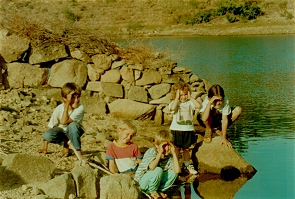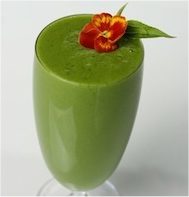|
Our Charis Family
Anne Ohlman

Hello Everyone! Greetings from
Texas! I was asked to consider
introducing myself to the community,
so, here goes.... My name is Anne
Ohlman and I am one of the newest
Charis students, having only begun
the program the beginning of
September. I have been greatly
enjoying the program so far,
especially the one-on-one coaching
that I have received. Though
I'm on the doula track of the
program, my end goal is to become a
Texas certified midwife, and serve
in my local area. I certainly
hope that part of that journey
includes marriage and children of my
own, but at present I am still
unmarried and living with my
parents, maternal grandmother and
five wonderful siblings.
Our family lived in Cameroon, Africa
for about twelve years as
missionaries. I was in Africa
from the time I was born, almost, to
when I was about 12 years old.
Moving back to the States has been a
hard process for me, but I do think
that many of the skills learned from
growing up overseas will aid me in
being a help to women of different
cultures living here in the U.S.
I came to knowledge of what
midwifery is, and why to birth our
babies at home mostly through the
influence of the wonderful families
at our church, about 3/4 of whom use
midwives, some in birth centers and
some at home. One family
invited me to attend the birth of
their youngest son, and after that I
was hooked. I am currently
apprenticed with a local midwife,
and having a wonderful time
following her around, learning to
assess baby positions, take blood
pressures, weigh and asses babies,
and help women through the birthing
process. The more I study about
homebirth, the more I am convinced
that birth is a process God made our
bodies to do, and that our attitude
should not be one of "fixing that
which is broken", unless some part
of the process actually is
broken.
I am really looking forward to
getting to know each one of you
through the Charis family, and
learning more about how fearfully
and wonderfully our bodies are made!
Blessings, Anne

My
siblings and I many years ago in
Africa next to a lake way up on top
of a mountain in northern Cameroon.
The water had schistosomes, so we
weren't allowed to touch it,
but we had fun looking at it. :)

One of our first adventures in
Africa, and my first memory of
Africa: sitting on the cooler,
waiting for help to arrive after a
mud puddle (sometimes it is better
just to drive through, not
around...) and a heavy load of wood
complicated our trip (8hrs) home
from Ngoundere, Cameroon to Sorombeo,
the village where we lived. My
uncle was visiting us, we gave him a
good introduction to missionary
life. :) I am the one sitting on the
cooler, my brother Joshua is
standing next to me and my mother is
holding my at-that-time youngest
brother Timothy. Not exactly sure
what year this was, probably
1995-ish and obviously it was rainy
season. :)

One section of the 8hr drive to the
nearest airport, hospital or
'grocery store' from our village
residence (mud hut :)

One of the villages in the area
where we worked.
|
|
Charis Cuisine
Green Smoothie with Melon

This is the best season for melons in the northern
hemisphere. All melons are an excellent source of
nutrition. Here are some facts:
CANTALOUPES are extremely high in Vitamins A and C. A
cup of cantaloupe will provide you with 103% of the
recommended daily value of Vitamin A and 112% of the
daily value for vitamin C. Vitamin A is known to
reduce risk of developing cataracts. Vitamin C is
critical for good immune function. Vitamin C
stimulates white cells to fight infection, directly
kills many bacteria and viruses. In addition,
cantaloupe also contains high levels of B vitamins, as
well as folic acid, and potassium.

HONEYDEW MELON is an excellent source of vitamin C and a
very good source of potassium,
copper, and B vitamins
(including thiamine, niacin, B6, and pantothenic acid).
Honeydew is a great source of folate, which has become
well known for its power to prevent birth defects and
thus is of great importance to women of childbearing
age. Folate is an essential component when cells
are dividing rapidly because it carries fragments of
proteins. Honeydew melons contain plenty of water,
which can keep you hydrated on a hot summer day.
Yummy Recipes
Half a cantaloupe
2 cups spinach
Blend well, using tamper. If you donít have a high speed
blender, add 1 cup water to this recipe.
One small Galia melon
1 cup cilantro or parsley (packed)
1 peach (optional)
Blend well, using tamper. If you donít have a high speed
blender, add 1 cup water to this recipe.
Half a honeydew melon
1 cup dandelions (packed)
Blend well, using tamper. If you donít have a high speed
blender, add 1 cup water to this recipe.
How to Pick a Perfect Melon
1) Smell the melon. When melons become ripe they
attract all creatures to the feast by emanating a strong
sweet smell, in order to help propagate the seeds.
Organic melons have a much stronger scent than
nonorganic. Find the most aromatic melon for yourself.
2) Choose the ripest melon you can find. In many
European countries, the farmers sell such ripe melons
that if you do not eat them in one or two days they
collapse. Choose the melon with no green veins or green
color in general. Look for lemon or beige color.
3) Choose a melon that feels heavy for its size.
4) Check to see if the stem end is moist (good)
or moldy (bad).
5) Melon should be firm but not a rock. If it is
soft or has soft spots itís too far gone. Sponginess is
bad.
In general, melons should be shaped according to their
variety. For example, cantaloupes should be round, etc.
In addition, melons should not have cracks, soft spots,
or dark bruises. You should look for a clean and smooth
break at the stem and for most mature melons have a
fruity fragrance (if not chilled).
Visit
Raw Family for more smoothie recipes!
Melon Storage:
Keep uncut melons at room temperature for two to four
days or until fully ripe, then refrigerate for up to 5
days. Refrigerate cut up melon in a covered
container up to 3 days. Remember that cut melons are
aromatic and their smell will penetrate other foods.
Melon Preparation:
Melon preparation is easy! Always wash melons in
warm soapy water before cutting to get rid of any
impurity on the rind that might be carried from the
knife blade to the flesh. Simply cut the melon in
half and scoop out the seeds and strings. Melons
can be cut into halves, quarters, wedges, cubes, or
scooped into balls with a melon baller. Most
melons will benefit from a squeeze of lemon or lime
juice to enhance the flavor and served at room
temperature.
Melon Varieties:
Melon varieties are now endless! Cantaloupe,
honeydew, and watermelon are the most well known
varieties. Lookout for more unusual melons at your
local supermarket or farmerís market for a different and
tasty sweet treat!
Casaba
Unlike the other melons, casaba melons do not have an
aroma. This is a large melon that is pale yellow
when ripe and has white flesh with a sweet taste.
This melon peaks in the fall, but starts showing up in
markets in July through December.
Crenshaw
These melons can weigh up to ten pounds and deliver a
unique sweet and spicy flavor. They are a hybrid
between the casaba and Persian melon with a yellowish
skin and salmon colored flesh. Peak season for
Crenshaw melons is August through September, with the
fruit season beginning in July and ending in October.
|